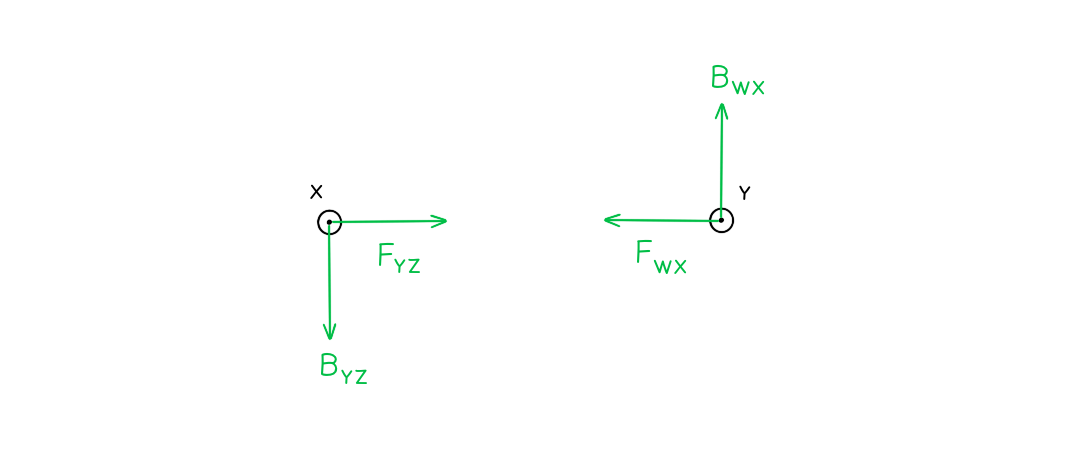Magnetic Force Between Two Parallel Conductors
- A current carrying conductor, such as a wire, produces a magnetic field around it
- The direction of the field depends on the direction of the current through the wire
- This is determined by the right hand thumb rule
- Parallel current-carrying conductors will therefore either attract or repel each other
- If the currents are in the same direction in both conductors, the magnetic field lines between the conductors cancel out – the conductors will attract each other
- If the currents are in the opposite direction in both conductors, the magnetic field lines between the conductors push each other apart – the conductors will repel each other

Both wires will attract if their currents are in the same direction and repel if in opposite directions
- When the conductors attract, the direction of the magnetic forces will be towards each other
- When the conductors repel, the direction of the magnetic forces will be away from each other
- The magnitude of each force depends on the amount of current and the length of the wire
Force per Unit Length Between Two Parallel Conductors
- The ratio
is the force per unit length between two parallel currents I1 and I2 separated by a distance r
- The force is attractive if the currents are in the same direction and repulsive if they are in opposite directions
- It is calculated using the equation:
- Where:
-
- F = the force applied between the two parallel wires (N)
- L = the length of each parallel conductor (m)
- μ0 = the constant for the magnetic permeability of free space (4π × 10−7 N A−2)
- I1 = the current through the first conducting wire (A)
- I2 = the current through the second conducting wire (A)
- r = the separation between the two conducting wires (m)

The forces on each of the current-carrying wires are equal and opposite in direction
Obtaining the Equation
- The force from wire 2 on wire 1, F2 = B2I1Lsin(θ)
- In this situation the magnetic field is perpendicular to the current in the wire, so sin(θ) = 1
- F2 = −F1 so the force between them is F
- The force on a unit length of the wires is then given by
- Hence,
- Hence,
- The magnitude of the magnetic field at a radial distance, r away from the current conducting wire is:
- In this case the magnetic field strength from B2 at a distance r away from wire 2 is:
- In this case the magnetic field strength from B2 at a distance r away from wire 2 is:
- Substituting for B2 into the force per unit length equation gives us:
Worked example
Two long, straight, current-carrying conductors, WX and YZ, are held at a close distance, as shown in diagram 1.

The conductors each carry the same magnitude current in the same direction. A plan view from above the conductors is shown in diagram 2.

On diagram 2, draw arrows, one in each case, to show the direction of:
- The magnetic field at X due to the current in wire YZ (label this arrow BYZ)
- The force at X as a result of the magnetic field due to the current in the wire YZ (label this arrow FYZ)
- The magnetic field at Y due to the current in wire WX (label this arrow BWX)
- The force at Y as a result of the magnetic field due to the current in the wire WX (label this arrow FWX)
Answer:

- Newton’s third law: When two bodies interact, the force on one body is equal but opposite in direction to the force on the other body
- Therefore, the forces on the wires act in equal but opposite directions

